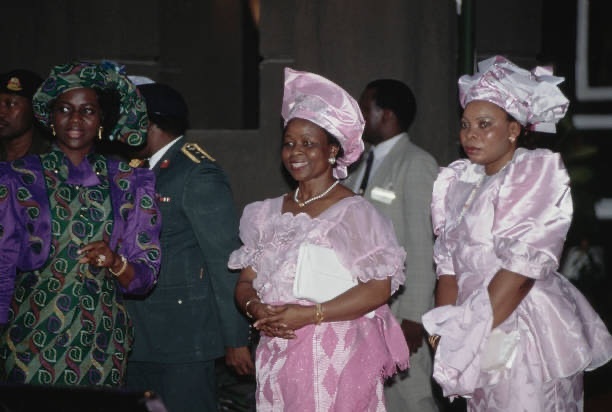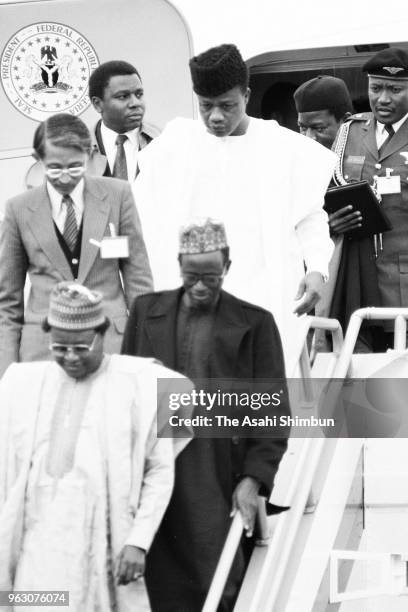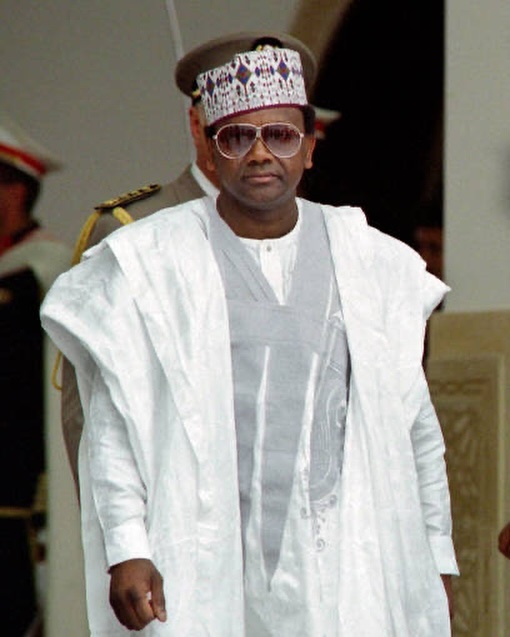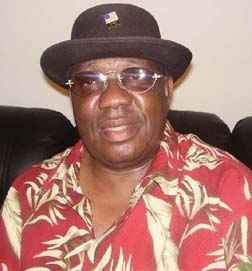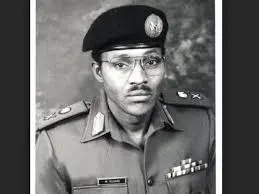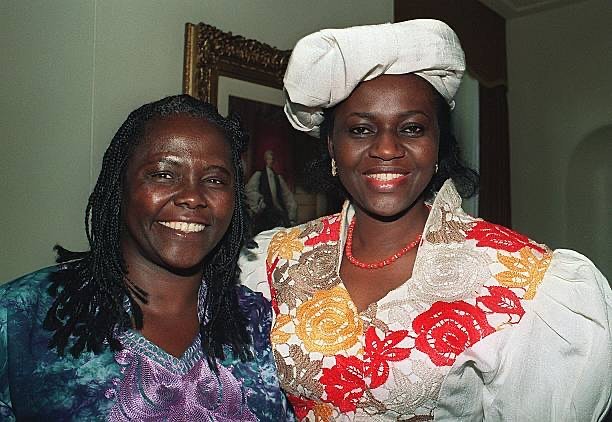Brief Insight into the Activities of Former First Lady, Maryam Babangida
Shortly before turning 21, on September 6, 1969, she wed Major Ibrahim Badamasi Babangida. They had two girls, Aisha and Halima, and two boys, Mohammed and Aminu. Maryam Babangida was elected President of the Nigerian Army Officers Wives Association (NAOWA) in 1983, following her husband’s appointment as Chief of Army Staff. In this capacity, she was active, opening clinics, schools, training facilities for women, and daycare centers. Her interests included reading, charity endeavors, squash, badminton, music, gardening, interior design, and bird watching. Image info: This image was taken on March 15, 1990, at the State House in Lagos State, Nigeria, during the beginning of a visit by Maryam Babangida, wife of Nigerian President Ibrahim Babangida, and Rebecca Aikhomu (M), wife of Vice President Augustus Aikhomu.

